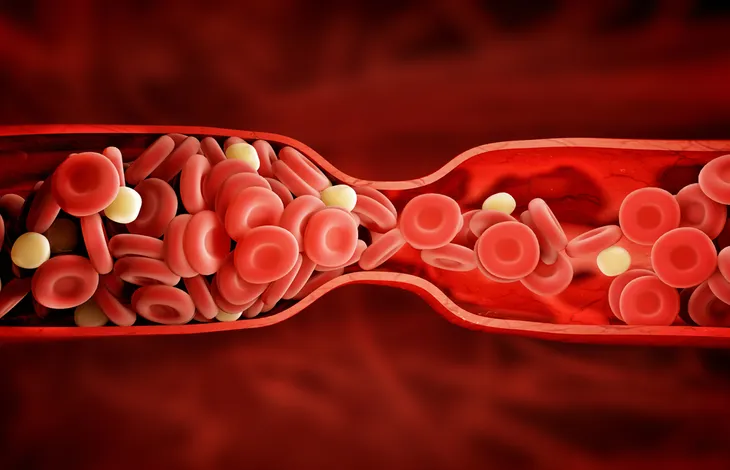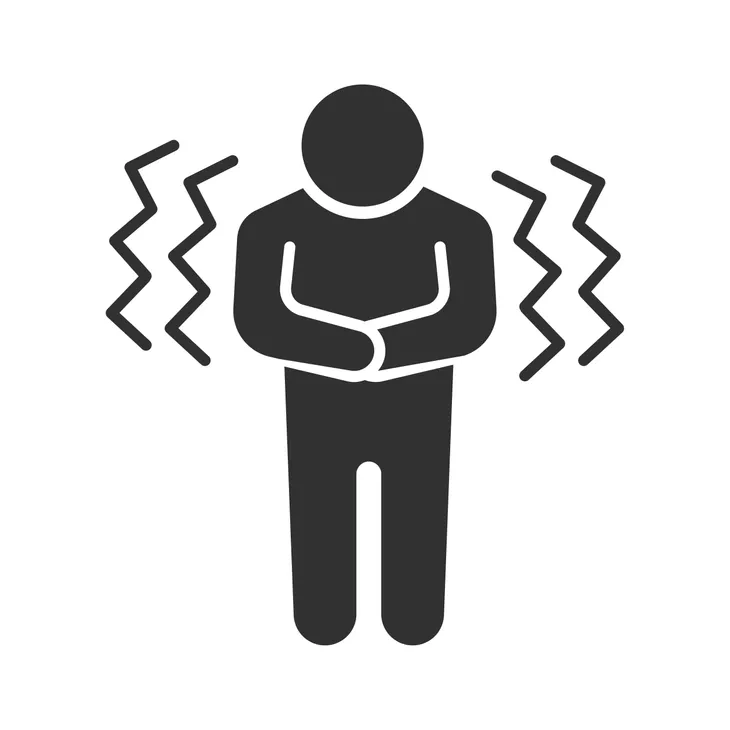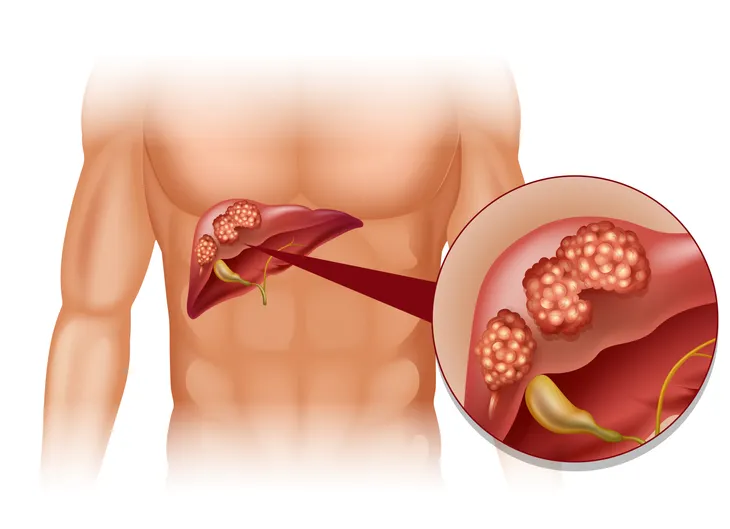Pancreatic cancer starts in the cells of the pancreas, a vital organ located behind the stomach. The pancreas plays an important role in digestion as it’s responsible for producing the enzymes the body needs to digest fats, carbohydrates, and proteins.
Due to the location of this organ, pancreatic cancer may be difficult to detect and oftentimes isn’t diagnosed until the more advanced stages. This may also have to do with the fact that the majority of pancreatic cancer patients show only vague symptoms of the disease, meaning most are only diagnosed in the advanced stages when chances of survival are quite low. However, recognizing a combination of these early warning signs can help save your life if you suspect pancreatic cancer…
1. Jaundice
Jaundice, or the yellowing of the skin and eyes, is common to those suffering from pancreatic cancer. Jaundice develops when there are excessive levels of bilirubin in the bloodstream or when a bile duct in the liver becomes blocked by a tumor. Even though jaundice creates relatively little physical discomfort, it’s important to seek immediate medical attention if it occurs. Jaundice can also be caused by numerous other factors, including infectious diseases and liver problems. Your doctor will likely begin by investigating and ruling out these more common causes before doing any tests for cancer.
One of the major complications of jaundice is inflammation of the pancreas (known clinically as pancreatitis), which can lead to nonspecific but persistent and potentially severe abdominal pain. Your doctor may suspect pancreatic cancer if your jaundice is accompanied by these types of pain symptoms. Sepsis, liver failure, renal failure and problems with blood clotting (coagulation) can also result from extended and severe cases of jaundice.
2. Abdominal Pain
Abdominal pain is reported by the majority of pancreatic cancer patients in the form of a dull, chronic pain or ache in the upper abdominal or back region, where tumors tend to develop. In most cases, this pain seems to originate in the abdomen, then “wrap around” the body, affecting the back. Many patients also report this pain is more severe at night and progresses from relatively mild to moderate and severe, intensifying over a period of several weeks or months. Doctors can look for tumors based on patient reports of the pain’s general location.
This two early warning signs should never be ignored, as pancreatic cancer is difficult to treat at the best of times and can cause major treatment challenges if it reaches an advanced stage before it is detected and diagnosed.
3. Rapid Weight Loss
You may celebrate losing a few pounds, but the rapid and unexplained weight loss associated with pancreatic cancer is swift and without apparent cause. In other words, you’ll notice significant or even severe weight loss, despite the fact that you have not been dieting or exercising. This weight loss may be accompanied by a general feeling of being unwell, which doctors call “malaise.”
Anytime you lose a significant amount of weight for no apparent reason, you should see a doctor to find out why. In pancreatic cancer patients, weight loss usually results from one of three things. First, it can be caused by depleted exocrine function, which disrupts your ability to digest food. Second, it could result from a loss of appetite, a symptom often seen in cancer patients. Finally, it could be because the growing tumor is sapping your body’s energy reserves, feeding on them to grow and leaving you malnourished.
4. Bloating
Gas and inflammation of the abdomen and digestive tract is common to those suffering from pancreatic cancer. In particular, gas will develop very quickly following a meal. Typically, these bloating and gas symptoms are accompanied by a diminished appetite. Many patients report feeling uncomfortably full after eating less than half their normal amount of food. Bloating may be accompanied by heartburn and/or indigestion.
Pancreatic cancer tumors can impact surrounding organs and bodily structures, exerting pressure on the stomach and abdomen and making it harder for your stomach to process its contents. As a result, food clears from your body more slowly, and you feel fuller for longer periods of time and don’t want to eat more. This can also lead to a sustained general feeling of nausea, which will generally intensify over time. Bloating may become severe enough to warrant a visit to the doctor.
5. Loss of Appetite
Loss of appetite is often a sign of an underlying health condition, such as pancreatic cancer. It can signal health woes ranging from a stomach virus to a growing tumor in one of your organs. Whatever the cause, it’s wise to bring this to your doctor’s immediate attention for an accurate diagnosis. Common causes of loss of appetite include an underactive thyroid gland (hypothyroidism), kidney damage, liver damage, or hepatitis (inflammation of the liver). Pregnant women may also experience loss of appetite in the first trimester of pregnancy, and it can occur before the woman realizes she is pregnant.
Pancreatic cancer is actually one of the rarer causes of loss of appetite, so you shouldn’t panic if this is the only symptom you’re experiencing. However, if your diminished appetite persists, and particularly if it causes significant weight loss, it’s important to find out what’s causing it so you can treat it. Rapid weight loss can carry significant health risks, even if cancer isn’t the root cause.
6. Discolored Stools
Oftentimes, when a liver bile duct becomes blocked by a pancreatic tumor, your stool will appear discolored—either pale and chalky in color or white and clay-like in color. You will also likely detect odor changes in your excrement. Bowel movements have an intense and unusually foul smell. Blood may also appear in bowel movements.
Discolored stools and changes in urine appearance, consistency, and odor are relatively uncommon symptoms of pancreatic cancer. If you are experiencing this, it is more likely than not that there is another explanation. However, pancreatic cancer cannot be ruled out if your doctor is unable to determine the underlying cause of these symptoms, particularly if they are present for an extended period of time or continue to intensify.
7. Dark Colored Urine
You may also notice that your urine has become darker (almost brown) in color without any dietary explanation. The smell of urine can change too, as it can become very pungent. It’s likely that blood would appear in urine as well. Similar to discolored stool, this symptom is more uncommon in pancreatic cancer but should not be ruled out.
8. Stomach Ache
Abdominal pain that comes and goes in waves, and is exacerbated when you go from standing to sitting to lying down, is often linked to pancreatic tumor growth. This abdominal pain can shift from the upper abdomen to the back, particularly following meals. If your doctor suspects that your pain is being caused by a pancreatic cancer tumor, he or she can use the epicenter of the pain as a clue to where to look for the tumor.
Many patients report that the pain worsens at night, during sleep, causing additional sleep disturbances. As a result, chronic daytime fatigue and exhaustion may accompany the abdominal pain symptoms. Patients often report that one of the only things that relieve their pain is bending over in a forward orientation.
9. Dermatitis
Pancreatic cancer patients can be prone to skin issues due to the blockage of liver bile ducts, which causes jaundice. However, pancreatic tumors can also cause dermatitis, or persistently dry, flaky, and itchy skin. Dermatitis can present in numerous ways, but it usually appears as dry patches of flaky skin that aren’t effectively relieved by the application of topical treatments. Doctors frequently misidentify this symptom as a non-severe dermatological problem, resulting from poor diet or excess stress.
The type of dermatitis associated with pancreatic cancer is known as eczematous dermatitis. One of the definitive characteristics of this condition is that it will not respond to treatments known to improve normal cases of eczema or dermatitis. In fact, dermatitis can be one of the earliest physical symptoms of pancreatic cancer, although it is often not linked to a malignancy until much later on in the diagnostic process.
10. Nausea
Nausea followed by bouts of vomiting is common in pancreatic cancer patients as the disease progresses, especially if a pancreatic tumor has grown so large that it blocks a portion of the digestive tract, causing inefficient and uncomfortable food digestion. Heartburn and acid reflux can also occur, which can cause a burning sensation in the throat following vomiting.
In most cases, severe nausea and vomiting will not occur until the disease has reached a relatively advanced stage. However, because pancreatic cancer is one of the most difficult types of malignancies to detect, patients may not experience severe health problems until tumors reach a sizable proportion. Nausea and vomiting are typically accompanied by rapid, unexplained weight loss and a diminished appetite, and all these symptoms have a related cause: impediments in the abdomen, usually localized around the duodenum, which interfere with normal digestion and excretion processes.
11. Diabetes
It is common for pancreatic cancer, particularly in more advanced stages, to interfere with the production of the hormone that regulates the amount of glucose in the blood. After all, this hormone is produced by the pancreas. However, if a tumor has developed, production can become inefficient, causing diabetes and associated symptoms such as fatigue, urinary urgency, numb fingers and toes, and vision problems. For these reasons, a recent, rapid, and otherwise unexplained onset of diabetes may lead your doctor to suspect that you might also have pancreatic cancer.
People with known and controlled cases of diabetes are known to be at elevated risk for developing pancreatic cancer, especially in cases of type 2 diabetes with a duration greater than 10 years or older. People who fall into this category are 1.5-times more likely than non-diabetics to develop pancreatic cancer. Obesity also increases your risk for both diabetes and pancreatic cancer.
12. Lower Back Pain
According to the American Cancer Society, lower back pain in combination with abdominal pain is common with pancreatic cancer. This type of radiating pain is quite common to cancers that develop in the tail area of the pancreas. Since cancers in this location can grow quite large, they may put pressure on other nearby organs, such as the liver, stomach, gallbladder, or duodenum (the first part of the small intestine).
Some cancers can even grow to eventually block the bile duct, causing bile to build up and engorge the gallbladder. Back pain will often occur when the cancer spreads to the nerves around the pancreas. Patients should be wary of pain in the abdomen or lower back, as both can signify pancreatic cancer as well as several other health conditions. Talk to your doctor immediately if you have these symptoms. Cancer that grows so large and enlarges the gallbladder may be detected during a physical exam and/or via imaging tests.
13. Depression
Prior to being diagnosed with pancreatic cancer, many people say they experienced changes in their mood, sometimes for years. This can include feelings of hopelessness, having negative thoughts, loss of appetite, and problems sleeping.
Although the link between these two serious medical conditions (depression and pancreatic cancer) is not entirely clear, past studies have indicated it is quite common. A study from 1967, for instance, found that “more than half of patients with pancreatic cancer had psychological symptoms occurring as early as [43 months] before physical symptoms,” cites Insight Medical Publishing.
14. Blood Clots
Although blood clots and pancreatic cancer may seem like unrelated conditions, the American Cancer Society says that a blood clot—especially one in the leg, called deep vein thrombosis (DVT)—is sometimes “the first clue that someone has pancreatic cancer.” Symptoms of DVT often include redness, swelling, tenderness, and warmth in the affected leg.
In some cases, the blood clot (or a piece of it) may detach from the leg and travel to the lungs. This is known as a pulmonary embolism (PE) and can result in symptoms such as chest pain and shortness of breath. If you experience any of these symptoms, you may need emergency medical treatment to determine if the cause is pancreatic cancer or other factors, such as DVT and/or PE.
15. Swelling in the Legs
While swelling in the legs may be due to a blood clot, which was mentioned previously, it may also be the result of something known as ascites. Ascites is when extra fluid builds up in the abdomen, causing swelling and stretching, and most commonly occurs when the pancreatic cancer has metastasized, or spread to other parts of the body.
This build up of fluid not only puts pressure on the abdominal area but also can extend outward to the lungs and lower body, including the legs. As a result, swelling in the legs and ankles may occur. To help relieve these symptoms, the Pancreatic Cancer Action Network suggests “resting in a reclined position with the feet up,” which not only relieves pressure but also “improves blood flow and helps drain the fluids.”
16. Fatigue
Fatigue can occur due to a variety of reasons, from not getting enough sleep to dehydration. It may also be indicative of a serious medical condition, including pancreatic cancer.
The fatigue may be a result of symptoms associated with pancreatic cancer (including many mentioned on this list) or caused by the cancer itself. For instance, you may experience fatigue due to insufficient nutrients from food, which occurs because the cancer affects enzyme production in the pancreas, resulting in improperly digested food.
17. Fever and Chills
If someone is not yet aware that they have pancreatic cancer, experiencing fever and chills may instead be dismissed as a symptom of a bacterial or viral infection, or the stomach flu (known clinically as gastroenteritis).
But with pancreatic cancer, fever and chills occurs as part of the body’s response to an inflamed pancreas. It may also be indicative of the tumor obstructing the bile ducts, which can lead to an infection that the body attempts to combat by elevating its temperature.
18. Swollen Gallbladder
One indicator of pancreatic cancer is a swollen gallbladder. The gallbladder can appear larger if the cancer blocks the bile duct. Doctors can see this as a large bump on the right side of the rib cage during an exam, or diagnose it through imaging tests. This symptom is a reason why pancreatic cancer patients may experience back pain.
19. Enlargement of the Liver
Not only can the gallbladder swell up due to pancreatic cancer, but so can the liver. This can cause a mass in the right upper quadrant of the abdomen. Unfortunately, this is a sign the pancreatic cancer is advanced. It’s also more likely that cancer has spread to the liver.
20. Early Stage Pancreatic Cancer Patients May Not Have Any Symptoms
It can be difficult for doctors to provide an early diagnosis for pancreatic cancer. This is because people usually don’t experience symptoms until the cancer has become very large or spread to other organs. The best thing you can do to receive an early diagnosis is to find out if you’re at increased risk. High risk people usually have a family history of the disease, but anyone can still develop this cancer. If you do experience any symptoms, make sure to see your doctor for a diagnosis.























